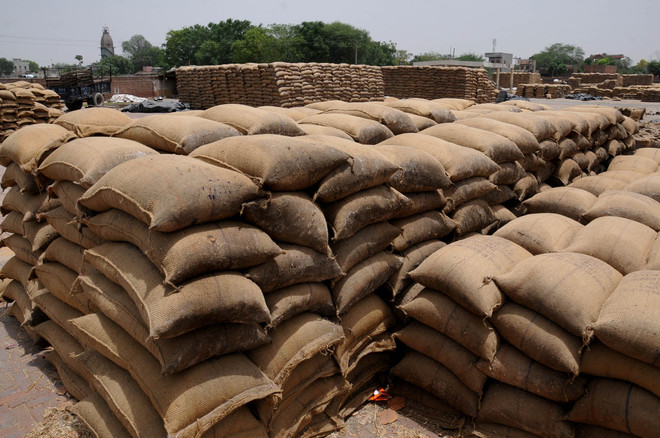A mountain of rice, but no more space to keep it: Punjab faces a familiar storage crisis
By Kanchan Vasudev
With the paddy season in full swing in Punjab and Chief Minister Bhagwant Mann asking the Centre to advance the official paddy procurement season by a fortnight this time, concerns are mounting due to a shortage of storage space for grains in the state.
Mann requested that the Centre start the paddy procurement season on September 15 instead of October 1. He said this was necessary as Punjab farmers have advanced their paddy sowing to tackle issues of high moisture content and to prevent stubble burning, which contributes to air pollution in Delhi.
Punjab is currently experiencing a shortage of storage space. As new stocks of paddy begin to arrive, the government may encounter significant challenges similar to those faced last year, when paddy was not collected due to inadequate storage facilities.
The state has a storage facility of 220 lakh metric tonnes (LMT) in covered and open plinths, which is currently completely full. Every year, 250 lakh tonnes of wheat and rice are received. Since existing storage space is full, the fresh stocks that come every year can now be accommodated only if there is adequate movement of the already stored stock.
Punjab’s paddy arrival is 180 to 190 LMT and only 66 per cent of rice is received after milling, which amounts to around 120 LMT. After procurement, paddy is sent directly to the mills. After that, it is milled, and the rice thus received is stored in covered spaces.
Only 7-8 LMT of rice moves out of the state on average every month, as many of the consumer states say they do not have enough requirement for rice. Hence, 20-30 LMT rice does not move out of the state every year. This backlog has led to zero storage space, say sources.
The state is expected to start storing around 120 LMT of rice by the end of this paddy season, while it has space available for only 25 to 30 LMT. To make room for the additional 100 LMT, the state needs a regular movement of 10–12 LMT per month to ensure at least 40 LMT of available space by December. The movement is averaging only 6.67 LMT per month for the last 12 months.
CM Mann’s meeting with Union minister Pralhad Joshi not fruitful
CM Mann sought the intervention of Union Food Minister Pralhad Joshi two weeks ago to expedite the movement of rice to prevent a crisis for the state government. He highlighted the persistent shortage of covered space in the state over the past two years.
He said that during the last paddy season, the space shortage also led to the extension of the delivery period for milled rice up to September 30, 2024. This caused concern among millers, and they were reluctant to lift and store paddy, even though the issue was later resolved.
CM Mann said for the Kharif marketing season 2024-25, out of the 117 LMT rice to be delivered to the Food Corporation of India (FCI), only around 107 LMT had been delivered by June 30, 2025, with 10 LMT still pending. He said only 80 LMT of rice had been moved out of the state in the last 12 months, averaging 6.67 LMT per month. Mann said the FCI had planned to move 14 LMT in June 2025, but only 8.5 LMT was actually lifted.
CM Mann stressed the need for the movement of at least 15 LMT of rice in July to complete milling by the end of the month. He told the Union minister that delays may trigger unrest among millers and hinder paddy procurement for KMS 2025–26. Considering the storage crunch, Mann requested continued allocation of rice to bio-ethanol manufacturing units at reasonable prices, liberal lifting under Open Market Sale Scheme (OMSS), rice exports, and other channels. Sources, however, said that the meeting was not fruitful. There has been no marked difference in lifting and it has not been expedited yet.
To optimise storage, CM Mann urged the Union minister to adopt a proactive approach to identifying, approving, and hiring covered godowns. Mann said a strategy of converting covered godowns of wheat to rice needs to be implemented. He said this strategy could free up 7 LMT of capacity for rice storage in KMS 2025–26, adding that this model could be adopted nationwide to mitigate space shortages.
This article has been republished from The Indian Express.

